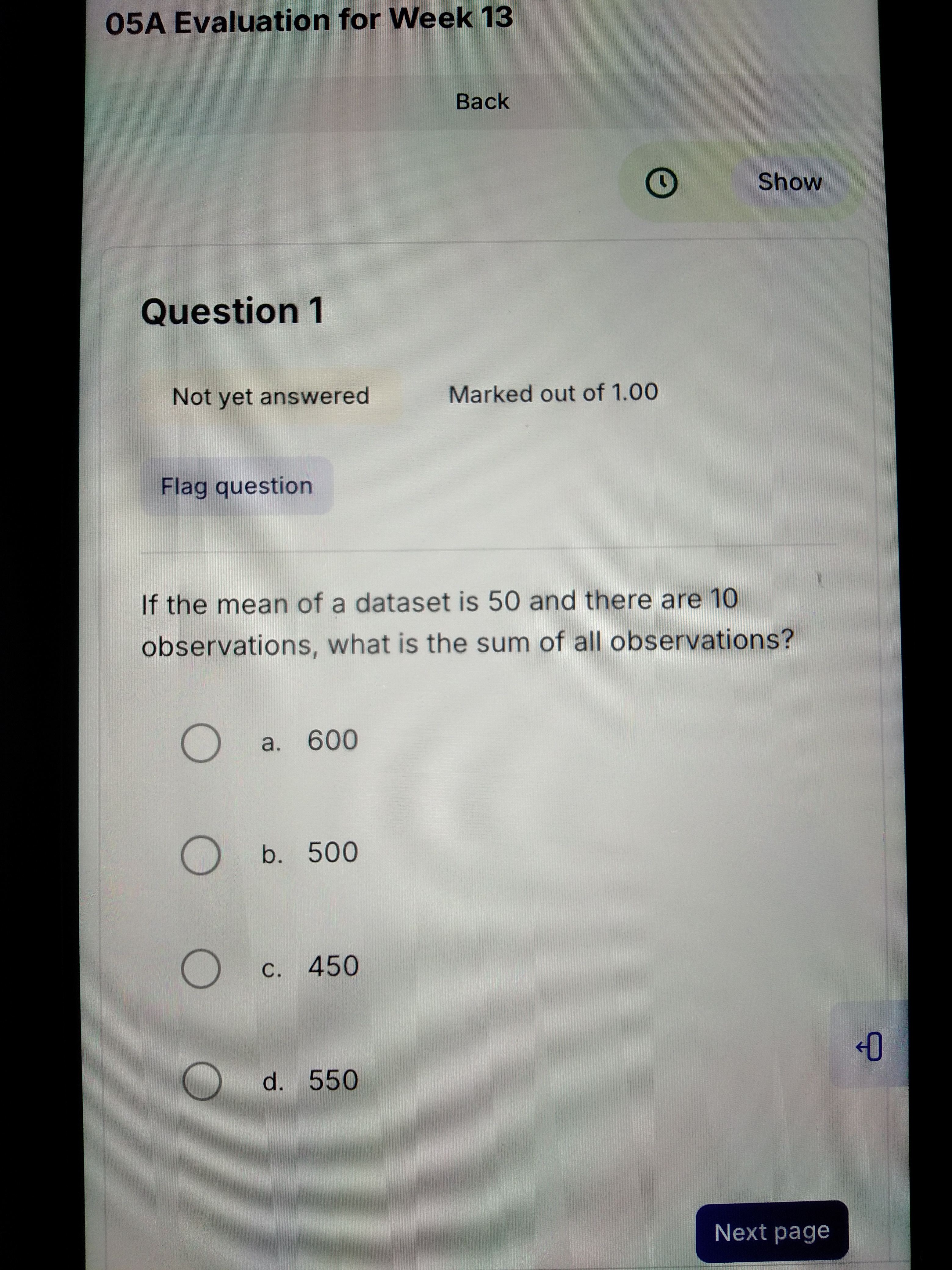If the mean of a dataset is 50 and there are 10 observations, what is the sum of all observations?

Understand the Problem
The question is asking to calculate the sum of all observations in a dataset given the mean and the number of observations. Since the mean is defined as the total sum of the observations divided by the number of observations, we can multiply the mean by the number of observations to find the total sum.
Answer
The sum of all observations is $500$.
Answer for screen readers
The sum of all observations is $500$.
Steps to Solve
- Identify the Variables
We know that the mean ($M$) is 50 and the number of observations ($N$) is 10.
- Apply the Mean Formula
The mean is calculated using the formula:
$$ M = \frac{S}{N} $$
where $S$ is the total sum of observations.
- Rearrange the Formula
To find the total sum ($S$), we rearrange the mean formula:
$$ S = M \times N $$
- Substitute Values
Substituting the given values into the equation:
$$ S = 50 \times 10 $$
- Calculate the Sum
Now, calculate the total sum:
$$ S = 500 $$
The sum of all observations is $500$.
More Information
The mean is an important statistical measure that gives an idea about the average of a dataset. In this case, multiplying the mean by the number of observations gives us the total sum. This method can be used for any dataset as long as the mean and the number of observations are known.
Tips
- Forget to multiply correctly: Always double-check your multiplication to ensure accuracy.
- Misinterpret the mean: Ensure you understand that the mean is not the total but rather an average.
AI-generated content may contain errors. Please verify critical information